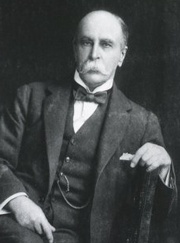This article is part of the series "A Moment in History" where we honor those who have contributed to the growth of medical knowledge in the areas of anatomy, medicine, surgery, and medical research.

Sir William Osler
Sir William Osler (1849-1919). William Osler was born in Bond Head, Canada, in what today is known as Ontario, of English parents. He started his college studies to become a minister, but realizing his true vocation was in medicine, he entered the Toronto School of Medicine, earning his medical degree in 1872.
Osler completed postgraduate studies in Europe, returning as a Professor at the McGill University. In 1884 he moved to Philadelphia to the University of Pennsylvania. In 1889 he left to become Physician-in-Chief and one of the founders of the newly-built John Hopkins hospital. His contributions to this new hospital and the American medical education are innumerable. Dr. Osler initiated the residency programs used today, as well as the programs of third and fourth year medical students in bedside patient rounds.
A prolific writer, Dr. Osler penned over 1,500 articles, monographs, and books, some of which are famous. His “Principles and Practice of Medicine” was published for a record 17 editions and 76 years (1892 -1968)! One of his most famous addresses is “Aequanimitas”, which he delivered when leaving the University of Pennsylvania.
In 1905 Dr. Osler accepted the position of Royal Chair of Medicine at Oxford, in England, and in 1911 he was awarded the title of “Sir William Osler”.
Personal Note: In June 1999, I had the opportunity to visit the collection of the John Martin Rare Book Room at the University of Iowa Medical School. I was allowed to read and handle original copies of the Fabrica and the Epitome by Vesalius as well as other original and rare medical books, including De Muto Cordis, by William Harvey. The books I had the opportunity to review were placed on an antique desk that belonged to Sir William Osler. A moment that has stayed with me, as it was the confluence of great individuals: Andreas Vesalius, the anatomist; William Harvey, the physiologist, and Sir William Osler, the medical educator. Dr. Miranda
Sources:
“Sir William Osler, M.D., C.M.” Sarik, J. Yeo, Ch.Pinckney J. The American Surgeon78.4 (2012): 385-7.
“Sir William Osler and gastroenterology” Chaun H. Can J Gastroenterol (2010) 24:10 615-618
“Sir William Osler (1849-1919)” Haas, LF J Neurol Neurosurg Psychiatry 1999 67: 137
“Sir William Osler (1849-1919)”Christian, HA Proc Amer Acad Arts Sci (1922) 496-499



